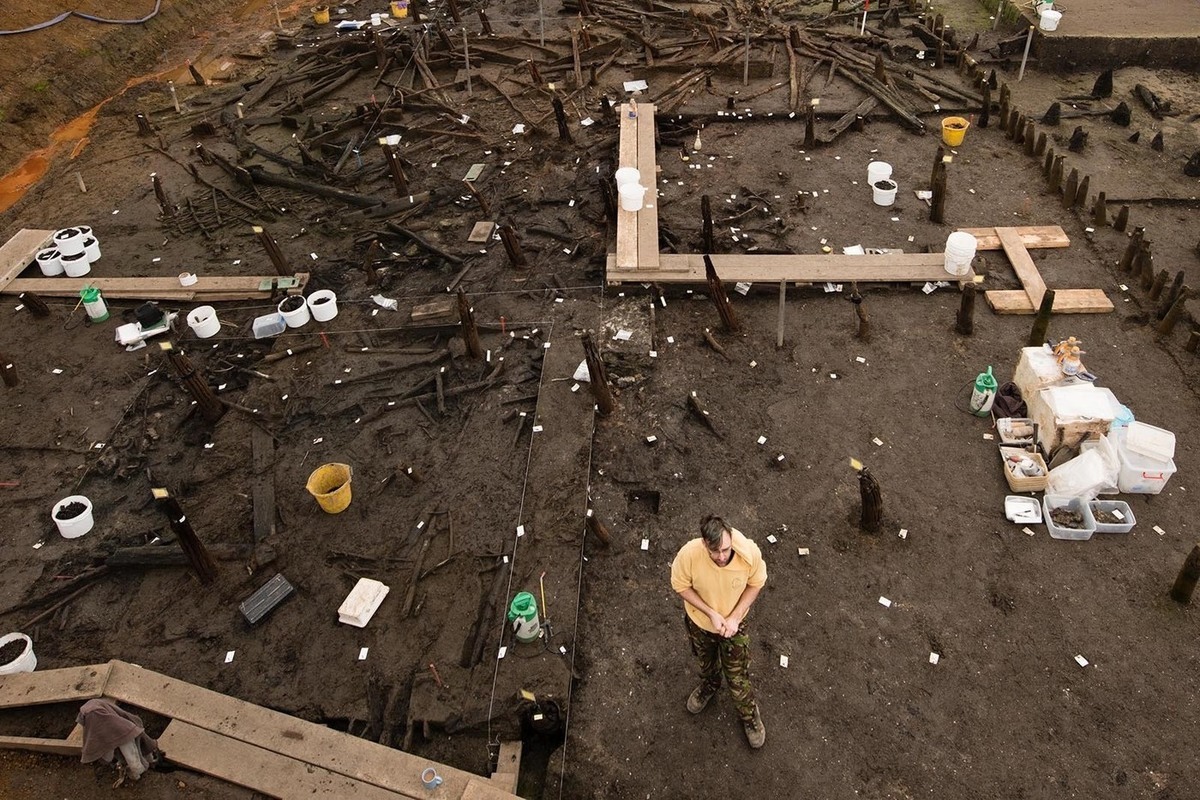English Pompeii gave archaeologists insight into prehistoric life
[ad_1]

A prehistoric settlement in England that has been compared to Pompeii was occupied less than a year before it burned to the ground, leaving behind many well-preserved artifacts, archaeologists say. The Bronze Age village, consisting of about 10 round wooden houses on stilts over a river, could potentially have housed between 50 and 60 people.
The remains of the dwellings were discovered at Mast Farm Quarry in the East Anglian marshes and provide insight into daily life almost 3,000 years ago.
The excavations have drawn comparisons to the Roman city of Pompeii as they represent a “time capsule” into Bronze Age life just as the era was ending.
Waterlogging in the area meant that thousands of objects survived, including nearly 200 wooden artifacts, more than 150 fiber and textile items, 128 ceramic vessels and about 90 metal items.
The cause of the 850 BC fire is unknown, but according to archaeologist Chris Wakefield, it may have occurred during an attack or started accidentally and spread quickly between closely packed houses.
The scientist noted that the wood from which the houses were built was young and free of insects such as wood borers.
People living and cooking in roundhouses would throw trash out of their doorways, creating “rings around the structures,” according to Wakefield.
“We were able to separate what was waste from what was still in use inside the houses when they were destroyed,” he comments. “Based on this amount of material, we were able to estimate that this was a fairly short-lived settlement, because there simply weren’t enough bones from butchered animals left over from cooking, not enough broken pots.”
The archaeologist described what remains as an “amazing time capsule”: “I think people have the impression that everyone was fighting to survive, that it was a terrible, vile time to live, and in fact, looking inside these structures you can to see that they have a very sophisticated level of technology with which they do everything they need.”
The scientist spoke about life in primitive times: people had “axes, which they created a little like a multi-tool and used for various functions.” In addition, primitive people came up with pots that could be stacked on top of each other, and this was long before the invention of the potter’s wheel, they were all made by hand.
He admitted that one of the houses had a “metal recycling bin.” The researchers also looked at what people ate in their homes.
“We know they have a meat stew that was thickened with wheat, so the consistency was a little like porridge,” Chris Wakefield said. “They seemed to pick out certain cuts of pork that they particularly liked the look of.” They may have even flavored some of these foods with spices, carrots and celery seeds.”
More than 18,000 timber structures were recorded, and Wakefield estimated that there were nine or 10 houses, each inhabited by a family.
“If a fire broke out in one of them, it would very easily spread to other buildings, and within a very short period of time, almost all of it would turn into smoke and collapse into the river,” the scientist suggests. He adds that the Bronze Age is a potentially violent time: “We find objects such as spears and swords at this site and others, so there is a possibility that there was some kind of attack that led to the settlement being burned to the ground. The only thing is that no one died during the fire, so we do not have any human remains found that would be associated with the fire itself.”
The archaeologist described the English Pompeii project as “one of the most comprehensive surveys of a prehistoric site ever undertaken in Britain.”
Historic England chief executive Duncan Wilson described the discoveries as “truly astonishing”.
[ad_2]
Source link








